![[Austria-Hungary War Ensign]](../images/a/ah-waren.gif) by Zeljko Heimer
by Zeljko Heimer
Last modified: 2004-05-08 by marcus schmöger
Keywords: yacht club | rank flag: yacht club | austria | hungary | austro-hungarian empire | cross (red) |
Links: FOTW homepage |
search |
disclaimer and copyright |
write us |
mirrors
See also:
k.u.k. Yacht Squadron (k.u.k. Yachtgeschwader), an elite yacht club based at Pola (Pula, Croatia), established by naval officers in
1891 ( and functioning until the end of the WWI). The k.u.k. Yachtgeschwader was re-established at
Attersee in Upper Austria in 1991 as a member of
ECYU. The most important book sources about the k.u.k Yachtgeschwader can be found at
http://www.faro.at/naubli/nau_k_l.htm and at
http://www.faro.at/naubli/nau_a_d.htm and they are the following:
- "Die Gesetze der International Yacht Racing Union", k.u.k. Yachtgeschwader 1909
- "Liste der Ehrenmitglieder, Stifter und Mitglieder des k.u.k. Yachtgeschwaders", k.u.k. Yachtgeschwader 1912
- "Statuten des unter dem Allerhöchsten Protektorate seiner k. und k. Apostolischen Majestät des Kaiser und Königs Franz Joseph I.
stehenden K.u.k. Yachtgeschwader", k.u.k. Yachtgeschwader 1911
- "Uniformierung für Flaggenoffiziere, Ehrenmitglieder, Stifter, Mitglieder, sowie für Kapitäne, Maschn", k.u.k. Yachtgeschwader 1912
- Bilzer, Franz Ferdinand, "Das k.u.k. Yachtgeschwader" 1990
I only have a copy of the membership list from 1903 ("Liste der Ehrenmitglieder, Stifter und Mitglieder des k.u.k. Yachtgeschwaders,
Berichtigt bis Ende Jänner 1903", Buchdruckerei J. Krmpotić & Co. in Pola, 1903, 43 pp.). It is very interesting
and shows that the k.u.k. Yachgeschwader was mostly an international aristocratic association (there are
numerous Erzherzogs, Princes, Counts and Barons among the members; the Kommodore of the club was Erzherzog Franz
Ferdinand) with some Austro-Hungarian naval officers and an admixture of high government officials and plutocrats
from different countries (e.g. 4 Rothschilds, 2 of them from Paris and 2 from Vienna, and 2 Vanderbilts from New York).
Surprisingly, Austro-Hungarian naval officers were not very numerous: there were only 15 of them among the 120
Stifter und Mitglieder I. Klasse (5 of them admirals: Conte Oskar Cassini, Egon Graf Chorinsky, Franz Freiherr
von Minutillo, Rudolf Graf Montecuccoli-Polinago and Hermann Freiherr von Spaun), and 16 among the 57 Mitglieder II.
Klasse, which means that in 1903 the percentage of naval officers in the club was about 17,5%. Nevertheless,
the "Komitee" of the club consisted of 10 naval officers (3 admirals among them: Cassini, Chorinsky and Minutillo)
and 3 civilians only (perhaps one of the reasons for that was the fact that the association was permanently based at Pola,
a naval base, and naval officers were the only true professionals in the club). On the other hand, there were
no active naval officers among the 5 Flaggenofficiere of the association (Kommodore: Erzherzog Franz Ferdinand;
Vize-Kommodore für Österreich: Alfred Graf Harrach; Vize-Kommodore
für Ungarn: Philipp Prinz von Sachsen-Coburg-Gotha; Kontre-Kommodore
für Österreich: Karl Graf Buquoy von Longueval; Kontre-Kommodore
für Ungarn: Geza Graf Andrassy). What is interesting, however, the title page of the brochure bears the emblem of the Austro-Hungarian
Navy (the Imperial crown above a fouled anchor), which is another suggestion that the squadron was considered part of
the Austro-Hungarian Navy (of course nominally and in a honorary way).
Tomasz Wyżyński, 14 March 2004
The k.u.k. Yachtgeschwader is interesting vexillologically since it was granted the right to fly the
Kriegsflagge (naval ensign) on the vessels of their members instead of the dual merchant ensign.
Zeljko Heimer, 14 March 2004
I know that the k.u.k. Yachtgeschwader members were entitled to use the Austro-Hungarian War Ensign (Kriegsflagge)
on their private boats, but the exact scope of this privilege is not completely clear to me.
Tomasz Wyżyński, 14 March 2004
Tomasz and I discussed in details various usage forms. Surely the copy of the statutes might shed some light on it, but according to my
limited knowledge to the yachting flagging practice, I believe that this summarizes all the questions we rised with some of my answers:
- vessels (ships and boats) were entitled to fly the Kriegsflagge (naval
ensign) based on their port of registration - i.e. foreign ships could not do that
even if their owner were members of the club and in the ships were in
Austro-Hungarian waters
- it remains open what ensign would be flown if there was no k.u.k. Yachtgeschwader member on board of such ship entitled to
Kriegsflagge
Zeljko Heimer, 14 March 2004
Nearly the last illustration from Znamierowski [zna99]
on page 251 shows part of
flagchart from "Nachtrag III zum Flaggenbuch" Berlin
1913, showing flags of yacht club officers in Austria-Hungary in
1913. In addition to the naval ensign (erroneously
translated "merchant flag") there are nine rank flags,
one for the commodore (highest rank in YC), and two sets of four
for lower ranks and members' flag, each for either Austria or
Hungary. The difference is in the crown and the coat-of-arms used - for
Austria the Austrian imperial crown and the black double eagle,
and for Hungary the St. Stephen's crown and the Hungarian coat-of-arms.
It is my guess that the two sets have been in use regarding the
ports of registrations of the vessels, those in Istria, Dalmatia
and Austrian held parts of Italy were using Austrian version,
while the vessels from Rijeka/Fiume and northern Croatian coast
used Hungarian version. I do not know how many such flags were in
use, possibly more in Italian parts of the empire (Venice,
Trieste) and maybe in Pula - being important military port where
certainly was quite a number of high ranking Austrian naval
officers living, which were naturally (probably) highest ranking
YC officers' too. Regarding Hungarian ensigns, apart from Rijeka,
and maybe Kraljevica (Porto Re) I doubt that there was important
port that would have YC members. But this whole paragraph is, of
course, a speculation.
Zeljko Heimer , 1 April 2000
The yachting flags would be flown at main mast or some other convenient place (as jack on smaller boats)
according to the highest member present on board, no matter what flag the owner was entitled
to (i.e. if owner was entitled to a higher flag and his skipper to a lesser, when
the owner is away, the lesser flag would have to be hoisted, I guess).
Zeljko Heimer, 14 March 2004
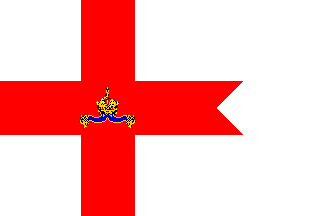
by Zeljko Heimer , 1 April 2000
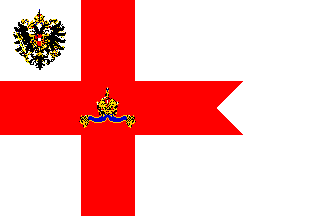
by Zeljko Heimer , 1 April 2000
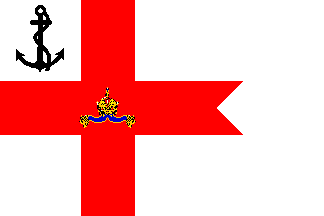
by Zeljko Heimer , 1 April 2000

by Zeljko Heimer , 1 April 2000
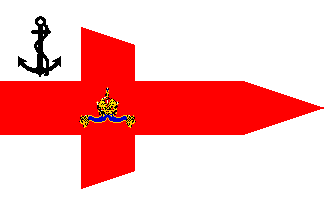
by Zeljko Heimer , 1 April 2000
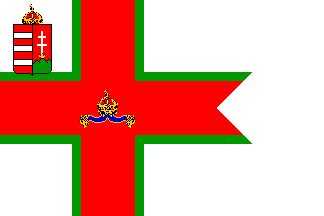
by Zeljko Heimer , 1 April 2000

by Zeljko Heimer , 1 April 2000
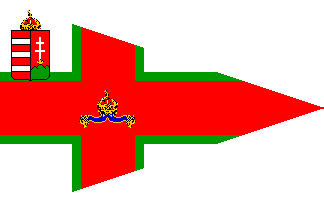
by Zeljko Heimer , 1 April 2000
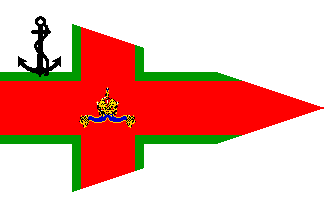
by Zeljko Heimer , 1 April 2000
- many members were at the same time high military officers - would they have hoisted their k.u.k. Yachtgeschwader flags at military
vessels (I think not) and would they have hoisted their military (e.g. admiral's) flags on their/others' private ships when on board (I
think quite likely)?
- the Navy had several smaller boats and yachts that were used documentedly in the yachting regates and other yacht club
festivities. These were commissioned vessels usually used by highest admirals monitoring the races and similar. Would they use military
flags (of course, I guess), but would they also have k.u.k. Yachtgeschwader flags hoisted at the time when the admirals were
obviously performing the k.u.k. Yachtgeschwader functions?
- what about the foreign members owning ships registered abroad. They would have no right to fly the
naval ensign on those ships, I am certain, but would they have been entitled to fly the k.u.k.
Yachtgeschwader flags (I guess so)? They were usually members of two or more
prestigious clubs. Would they use more than one flag, or would they choose one set
according to where on Earth they would be? I suppose that there were other privileges of the membership that would
encourage someone to join (for a very high fee!), but the membership flags, but they would be clear indication of such privileges.
- regarding the close link of the club with the Navy, would the members be entitled to honorary military ranks (possibly
only in ceremonial sense, to wear uniforms at balls etc.)? I think not.
- the k.u.k. Yachtgeschwader was divided into two parts, the Austrian and the Hungarian, as the flags clearly indicate. Were the members
registered in the two "houses" (for lack of the better name), so they would use the "national" variant of their "house", or was the
choice left to the member as he pleases in certain occasion, or was it connected with the port of registration (but then what when the
member is guest on somebody else's boat)? The club had ships and boats registered in Pola/Pula and
other Istrian cities, probably also in Fiume/Rijeka, but also on inland lakes and rivers, both in
Austrian and Hungarian part of the Empire.
- it is not clear to me nor to Tomasz whether the yachting flags were used also by the other yacht clubs in the Empire, or
whether they had other sets. Such clubs would be Motor-Jachtclub von Österreich and
the Kaiserl. Königl. Union-Yacht-Club. As far as I inderstand, these other clubs must have used the
dual merchant ensign, so their yacht could be easily
differentiated frm the k.u.k. Yachtgeschwader yachts according to this element only.
Zeljko Heimer, 14 March 2004
I don´t have enough sources from these countries, but
probably the rank flags were common for all the clubs. This
situation was/is the same in the United States.
Jose C. Alegria , 1 April 2000
- another intersting link is at http://www.spielberg.at/gemeinde/geschichte/brioni.rtf
describing
yachts used at regatas in Brioni (I admit I have not read it carefully though, so I do not know how much flag content it has,
possibly very minor). However it shows how yachts were navigated in regatas by other members, not the owners, and that would pose the
questions above regarding the flagging practice.
Zeljko Heimer, 14 March 2004